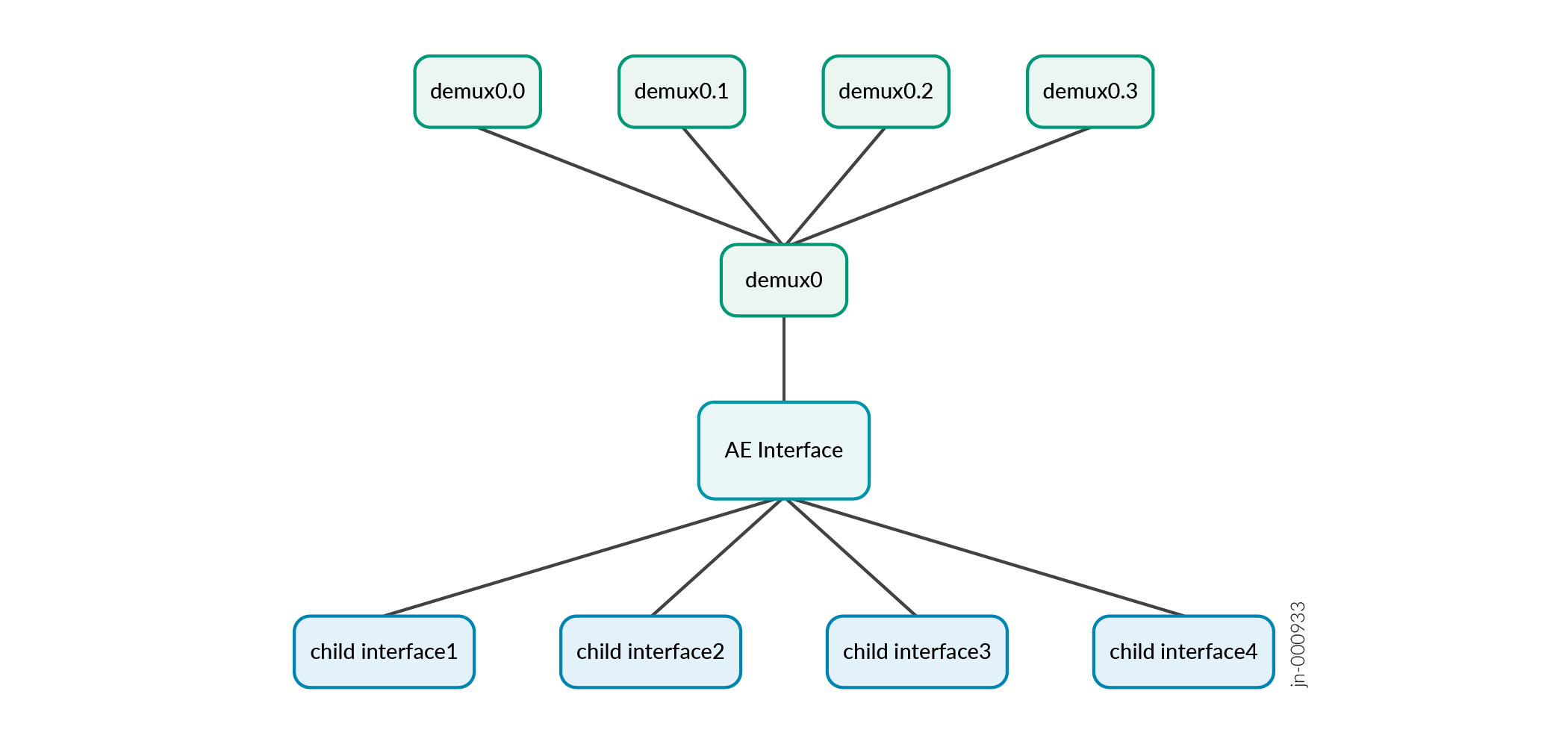Class of Service on demux Interfaces
This topic describes class of service (CoS) functionality and configuration on demux interfaces. demux interfaces support basic CoS functionality including behavior aggregate (BA) classifiers, rewrite rules, fixed classification, and port-level scheduling with targeted distribution.
Demultiplexing (demux) interfaces are logical interfaces that share a common, underlying interface. You can create logical subscriber interfaces using static or dynamic demultiplexing interfaces. In addition, you can use IP demultiplexing interfaces or VLAN demultiplexing interfaces when creating logical subscriber interfaces.
Overview of CoS on demux Interfaces
demux interfaces support basic CoS functionality, including:
-
Classifiers including INET precedence, DSCP, IEEE 802.1p, and IEEE 802.1ad
-
Rewrite rules including INET precedence, DSCP, IEEE 802.1p, and IEEE 802.1ad
-
Fixed classification
demux interfaces do not support MPLS EXP classifiers or rewrite rules.
Figure 1 shows the demux
interface (demux0) with an underlying aggregated Ethernet (AE)
interface. You can assign classifiers and rewrite rules to the logical interfaces
(demux0.x) of the demux interface. You can then configure
schedulers, scheduler maps, traffic control profiles, and so on, for the underlying
AE interface.

Configuring CoS on demux Interfaces
This section provides a simple example of how to configure a classifier and a rewrite rule for demux logical interfaces as well as a traffic control profile for the underlying AE interface.
In the very simple example above, IEEE802.1ad traffic arriving on
demux0.0 with a code point of 0000 is
assigned a forwarding class of expedited-forwarding and a loss
priority of low. Through the traffic control profile, this
traffic has up to 500 Mb of bandwidth as it traverses the router. Upon exiting
the router through demux0.1, the traffic's code point is
rewritten to 1011.
